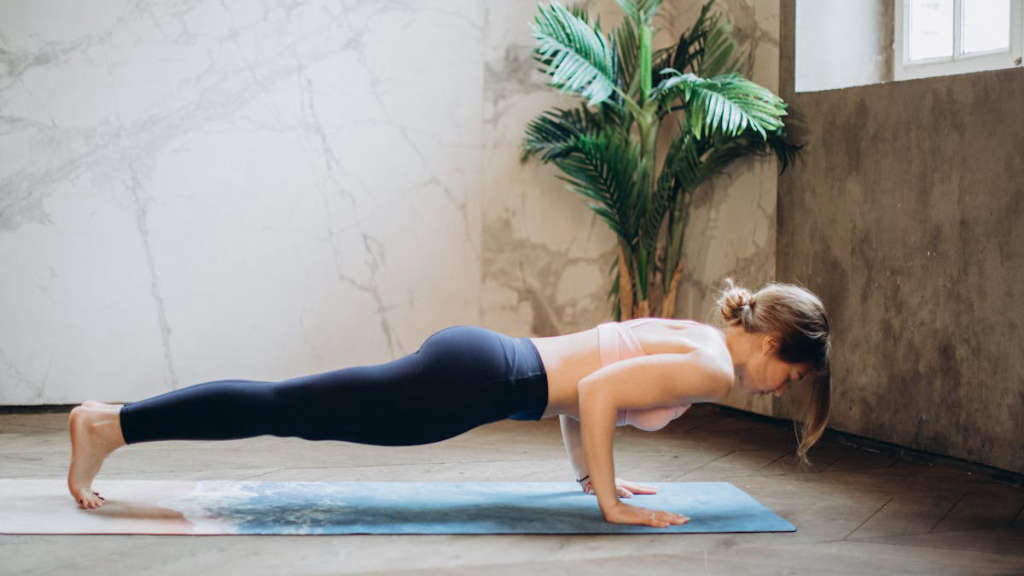As we age, it’s important to pay attention to our bodies and any changes that may occur. Arthritis is a common condition that can cause pain and discomfort, but recognizing the early signs can help in managing and treating it effectively. So, how will I know if I have arthritis? There are certain symptoms and indicators that can point to the presence of arthritis, and being aware of these signs can make a difference in seeking early treatment and support.
Main Points
- Joint pain and stiffness: One of the early signs of arthritis is experiencing pain and stiffness in the joints, especially after periods of inactivity
- Swelling and tenderness: Inflamed joints may also show swelling, tenderness, and warmth, indicating the presence of arthritis
- Difficulty in movement: Arthritis can make it difficult to perform everyday activities such as walking, climbing stairs, or even holding objects with your hands
- Fatigue and malaise: Feeling tired and generally unwell can also be early signs of arthritis, as the body is constantly coping with inflammation and pain
- Weakness in muscles: Arthritis can cause weakness and loss of strength in the muscles surrounding the affected joints
Understanding the Different Types of Arthritis
Arthritis is a common condition that affects millions of people worldwide. It refers to inflammation and pain in the joints, and there are several different types of arthritis that can cause varying levels of discomfort and disability. Understanding the different types of arthritis is essential for proper diagnosis and treatment.
The Most Common Types of Arthritis Include:
- Osteoarthritis: This is the most common type of arthritis, often referred to as “wear and tear” arthritis. It occurs when the protective cartilage that cushions the ends of the bones wears down over time, leading to pain and stiffness.
- Rheumatoid Arthritis: Unlike osteoarthritis, rheumatoid arthritis is an autoimmune disorder that causes the body’s immune system to mistakenly attack the joints, leading to inflammation and joint damage.
- Psoriatic Arthritis: This type of arthritis affects some people who have psoriasis, a skin condition that causes red, scaly patches to appear on the skin. Psoriatic arthritis can cause swelling, pain, and stiffness in the joints.
It’s important to note that there are many other types of arthritis, each with its own unique characteristics and symptoms. Seeking medical advice from a healthcare professional is crucial for an accurate diagnosis and appropriate management of the condition.
Common Risk Factors for Developing Arthritis
Arthritis is a common condition that affects millions of people around the world. It is characterized by inflammation and pain in the joints, and can significantly impact a person’s quality of life. While the exact causes of arthritis are still not fully understood, there are several common risk factors that have been identified. By being aware of these risk factors, individuals can take steps to reduce their risk of developing arthritis.
Age
One of the most common risk factors for arthritis is age. As people get older, the risk of developing arthritis increases. This is due to the natural wear and tear that occurs in the joints over time. While arthritis can affect people of all ages, it is most commonly seen in older adults.
Family History
Another significant risk factor for arthritis is a family history of the condition. Research has shown that genetics can play a role in the development of arthritis, and individuals with a family history of the condition are at a higher risk of developing it themselves. If one or both parents have arthritis, the risk for their children is increased.
Obesity
Being overweight or obese is also a major risk factor for arthritis. The excess weight puts added stress on the joints, especially those in the knees, hips, and feet. This can lead to the breakdown of cartilage and an increased risk of developing arthritis. Maintaining a healthy weight through diet and exercise is important in reducing this risk.
| Common Risk Factors for Arthritis | Impact on Arthritis Development |
|---|---|
| Age | Increased risk as individuals get older |
| Family History | Genetic predisposition to developing arthritis |
| Obesity | Excess weight puts added stress on joints |
The Impact of Arthritis on Daily Life
Arthritis is a condition that affects millions of people around the world. It is a chronic disease that causes inflammation in the joints, leading to pain, swelling, and stiffness. The impact of arthritis on daily life can be profound, affecting everything from simple tasks to overall quality of life.
Physical Impact
The physical impact of arthritis can be debilitating. Simple tasks such as getting dressed, cooking, or even walking can become extremely challenging. The pain and stiffness in the joints can severely limit mobility and affect overall physical health.
Emotional Impact
The emotional impact of living with arthritis should not be overlooked. Chronic pain and physical limitations can lead to feelings of frustration, helplessness, and even depression. It can be challenging to maintain a positive outlook when dealing with the constant pain and discomfort that arthritis brings.
Social Impact
Arthritis can also have a significant impact on a person’s social life. The physical limitations and emotional toll of the condition can make it difficult to participate in social activities, leading to feelings of isolation and loneliness. This can further impact a person’s mental well-being and overall quality of life.
In conclusion, the impact of arthritis on daily life is significant. It affects not only the physical well-being of an individual, but also their emotional and social health. It is important to provide support and understanding to those living with arthritis and to continue researching and developing treatments to improve their quality of life.
Recognizing the Early Symptoms of Arthritis
Arthritis is a common condition that affects millions of people worldwide. It is important to recognize the early symptoms of arthritis so that proper treatment and management can be initiated. Early detection can help prevent further joint damage and improve the quality of life for those affected.
Common Early Symptoms of Arthritis
1. Joint Pain: One of the earliest signs of arthritis is persistent joint pain. This pain may be mild at first and can worsen over time. It is important to pay attention to any unexplained joint pain, especially if it lasts for more than a few weeks.
2. Joint Stiffness: Stiffness in the joints, especially in the morning or after periods of inactivity, can be an early indicator of arthritis. Difficulty in bending or moving the affected joints can be a sign of underlying joint inflammation.
3. Swelling and Redness: Swelling and redness around the joints can indicate inflammation, which is a common symptom of arthritis. This can be accompanied by warmth in the affected area and may interfere with normal joint function.
Other Potential Symptoms
In addition to the above-mentioned symptoms, early signs of arthritis may also include:
- Fatigue: Feeling unusually tired or fatigued, which can be a result of the body’s immune system response to the joint inflammation.
- Weakness: Weakness in the muscles around the affected joints, making it difficult to perform daily activities.
- Numbness or Tingling: Numbness or tingling sensations in the hands or feet, which can be associated with certain types of arthritis.
When to Seek Medical Advice
If you experience any of the above symptoms on a regular basis, it is important to seek medical advice. An early diagnosis can help in managing arthritis more effectively and prevent long-term joint damage.
| Joint Pain | Joint Stiffness | Swelling and Redness |
|---|---|---|
| Early sign of arthritis | Especially in the morning or after inactivity | Indicates inflammation |
The Importance of Early Diagnosis and Treatment
Early diagnosis and treatment are vital in ensuring the best possible outcome for any medical condition. It is crucial for individuals to seek medical attention at the first sign of symptoms and to follow through with any recommended treatment plan.
One of the key reasons why early diagnosis is so important is the potential for better treatment effectiveness. When a condition is caught in its early stages, it is often easier to manage and treat. This can lead to a higher probability of successful outcomes and a lower risk of complications. Additionally, early diagnosis can also help alleviate any potential emotional or psychological burden that may come with not knowing what is causing symptoms.
Furthermore, early treatment can often prevent the progression of a condition, reducing the overall impact on a person’s health and quality of life. By addressing a medical issue early on, individuals may be able to avoid more aggressive or invasive treatment options down the line.
The Role of Medical Professionals
Medical professionals play a crucial role in the early diagnosis and treatment of medical conditions. It is essential for healthcare providers to be vigilant in recognizing symptoms, conducting thorough evaluations, and recommending appropriate treatment plans. They are also responsible for educating individuals about the importance of seeking timely medical care and adhering to treatment protocols.
In conclusion, the importance of early diagnosis and treatment cannot be understated. By prioritizing proactive healthcare practices, individuals can significantly impact their overall health and well-being.
Managing Arthritis Pain and Discomfort
Arthritis can be a debilitating condition, causing pain, stiffness, and discomfort for those who suffer from it. However, there are ways to manage and alleviate the symptoms of arthritis, allowing individuals to live a more comfortable and active life.
Medication
One of the most common methods of managing arthritis pain is through the use of medication. Nonsteroidal anti-inflammatory drugs (NSAIDs) such as ibuprofen can help reduce inflammation and relieve pain. In more severe cases, corticosteroids or disease-modifying antirheumatic drugs (DMARDs) may be prescribed by a healthcare professional.
Exercise
Regular exercise can help improve flexibility, strengthen muscles, and reduce joint pain. Low-impact activities such as swimming, walking, and yoga are often recommended for individuals with arthritis. It is important to consult with a healthcare provider before starting an exercise regimen to ensure it is safe and appropriate for your condition.
Weight Management
Excess weight can put added stress on joints, worsening arthritis symptoms. Maintaining a healthy weight through a balanced diet and regular exercise can help reduce pain and improve overall joint function.
“Living with arthritis can be challenging, but with proper management, individuals can still lead active and fulfilling lives.”
Education, medication and support from healthcare providers and loved ones can also play a crucial role in managing arthritis pain and discomfort.
| Method | Description |
|---|---|
| Medication | Use of NSAIDs, corticosteroids, or DMARDs to reduce inflammation and relieve pain. |
| Exercise | Low-impact activities to improve flexibility, strengthen muscles, and reduce joint pain. |
| Weight Management | Maintaining a healthy weight to reduce stress on joints and improve overall joint function. |
The Role of Exercise in Arthritis Management
Arthritis is a common condition that causes pain and inflammation in the joints, affecting millions of people worldwide. While there is no cure for arthritis, there are various management strategies that can help alleviate symptoms and improve quality of life. One of the most important components of arthritis management is exercise. Exercise plays a crucial role in maintaining joint function, reducing pain, and improving overall physical and mental well-being for individuals with arthritis.
Benefits of Exercise for Arthritis Management
Regular physical activity can provide numerous benefits for individuals with arthritis, including:
- Improved joint flexibility and range of motion: Exercise helps to maintain and improve the flexibility of the joints, reducing stiffness and increasing mobility.
- Strengthening of muscles: Strong muscles can help support and protect the joints, reducing the risk of injury and improving overall function.
- Weight management: Engaging in regular exercise can help individuals maintain a healthy weight, which can reduce stress on the joints and alleviate pain.
- Pain relief: Exercise releases endorphins, which are natural painkillers, providing relief from arthritis-related discomfort.
- Improved mood and mental well-being: Physical activity can help reduce stress and improve overall mental health, which is particularly important for individuals living with chronic conditions like arthritis.
It is important for individuals with arthritis to work closely with their healthcare team to develop a personalized exercise plan that takes into account their unique needs and limitations. Consultation with a healthcare professional will ensure that the chosen exercise regimen is safe and effective for managing arthritis symptoms.
Overall, incorporating regular exercise into a comprehensive arthritis management plan is essential for improving joint function, reducing pain, and enhancing overall quality of life for individuals living with arthritis.
Diet and Nutrition Tips for Arthritis Sufferers
Living with arthritis can be challenging, but making changes to your diet and nutrition can help alleviate symptoms and improve your overall quality of life. Here are some important tips to consider:
Focus on Anti-Inflammatory Foods
One of the key components of managing arthritis through diet is incorporating anti-inflammatory foods into your meals. These include:
| Fruits | Vegetables | Healthy fats (such as those found in olive oil and avocados) |
|---|---|---|
| Berries | Leafy greens | Nuts and seeds |
| Cherries | Broccoli | Fatty fish (such as salmon and mackerel) |
These foods are rich in antioxidants and omega-3 fatty acids, which can help reduce inflammation in the body and ease arthritis symptoms.
Limit Processed Foods and Sugar
Processed foods and added sugars can contribute to inflammation and exacerbate arthritis symptoms. It’s important to limit your intake of:
- Processed snacks and baked goods
- Sugary drinks and desserts
- Fast food and fried foods
Instead, focus on whole, unprocessed foods and use natural sweeteners like honey or maple syrup in moderation.
Stay Hydrated
Proper hydration is essential for maintaining joint health. Aim to drink at least 8-10 glasses of water per day, and include hydrating foods such as cucumbers, watermelon, and celery in your diet.
By incorporating these diet and nutrition tips into your lifestyle, you can better manage your arthritis and improve your overall wellbeing.
Seeking Support and Resources for Arthritis Management
Living with arthritis can be challenging, but with the right support and resources, it is possible to effectively manage the condition and improve quality of life. Whether you have been recently diagnosed or have been living with arthritis for some time, seeking out the appropriate support and resources is crucial for your overall well-being.
Understanding the Diagnosis
Education is the first step in effectively managing arthritis. Seek out reliable sources of information such as reputable websites, books, and medical professionals to gain a better understanding of your diagnosis. Knowing the specific type of arthritis you have and how it affects your body is essential for developing a management plan.
Building a Support Network
Dealing with arthritis can feel overwhelming at times. It is important to connect with others who understand what you are going through. Look for local support groups or online communities where you can share experiences, gain advice, and receive encouragement from others living with arthritis. Building a support network can provide emotional support and practical tips for managing daily challenges.
Accessing Resources
There are numerous resources available to help individuals manage arthritis. This can include physical therapy, assistive devices, pain management techniques, and more. Speak with your healthcare provider to explore the resources that are available to you. Additionally, organizations such as the Arthritis Foundation offer educational materials, exercise programs, and advocacy efforts to support individuals with arthritis.
Overall, seeking support and resources for arthritis management is an essential part of taking control of your condition and living a fulfilling life. By staying informed, connecting with others, and accessing available resources, you can effectively manage arthritis and improve your overall well-being.
Conclusion
In conclusion, it is important to be aware of the symptoms of arthritis and to pay attention to any joint pain or stiffness that lasts for more than a few weeks. If you experience these symptoms, it is important to consult with a healthcare professional who can perform a thorough evaluation and provide a proper diagnosis. By seeking medical attention, you can determine if you have arthritis and begin appropriate treatment to manage the condition. How will I know if I have arthritis? It’s crucial to listen to your body and seek medical advice if you suspect that you may be experiencing symptoms of arthritis. Early detection and treatment are key to managing the condition and maintaining a good quality of life.
Frequently Asked Questions
How do I know if I have arthritis?
Arthritis can cause joint pain, stiffness, and swelling. If you are experiencing these symptoms, it is advisable to consult a healthcare professional for a thorough evaluation.
What are the different types of arthritis?
There are over 100 types of arthritis, including osteoarthritis, rheumatoid arthritis, psoriatic arthritis, and gout, among others.
What are the risk factors for developing arthritis?
Risk factors for arthritis include family history, age, previous joint injury, obesity, and certain occupations that involve repetitive joint movements.
How is arthritis diagnosed?
Arthritis is typically diagnosed through a combination of physical examination, medical history assessment, imaging tests, and blood tests.
What are the treatment options for arthritis?
Treatment for arthritis may include medications, physical therapy, lifestyle modifications, and in some cases, surgery.
Can arthritis be prevented?
While some types of arthritis cannot be prevented, maintaining a healthy weight, exercising regularly, and preventing joint injuries may help reduce the risk of developing certain types of arthritis.
What are the lifestyle changes that can help manage arthritis?
Lifestyle changes such as maintaining a balanced diet, staying physically active, and managing stress can help manage arthritis symptoms and improve overall well-being.
Is arthritis a progressive condition?
Some types of arthritis are progressive, meaning they worsen over time, while others may remain stable or improve with proper treatment and management.
Can arthritis affect children?
Yes, certain types of arthritis, such as juvenile idiopathic arthritis, can affect children and adolescents.
What should I do if I suspect I have arthritis?
If you suspect you have arthritis, it is important to seek medical advice and evaluation from a healthcare professional specialized in rheumatology or orthopedics.






















0 Comment